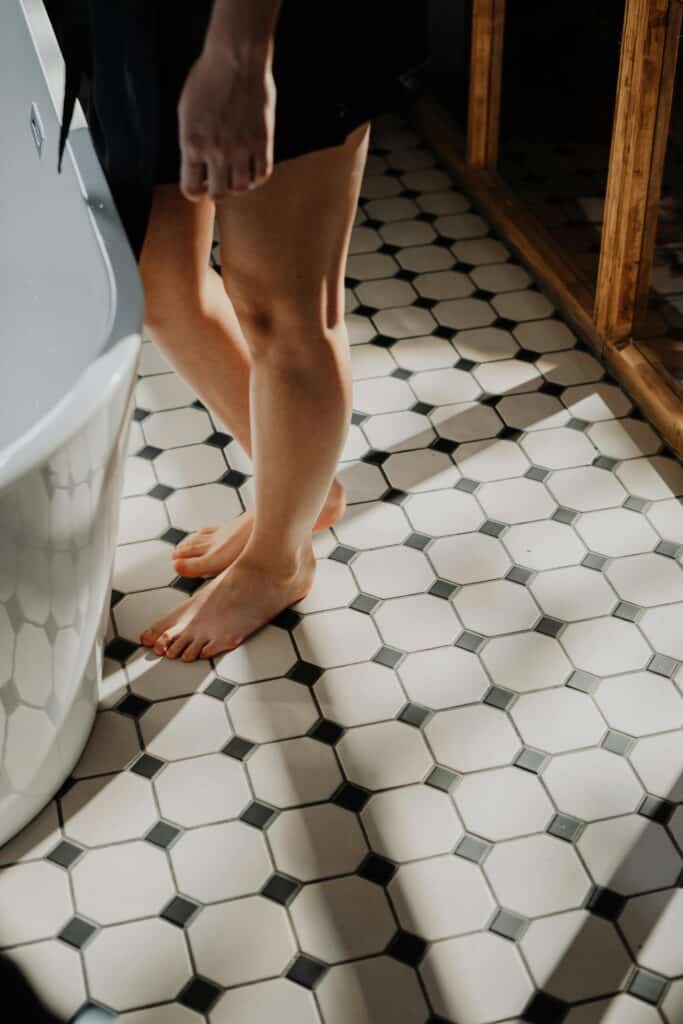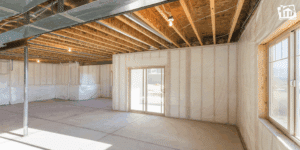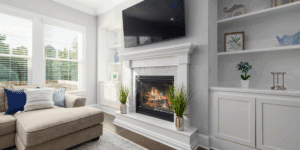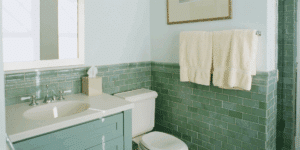Why Planning Is the Secret to a Successful Bathroom Remodel
Whether you’re aiming for a full bathroom redesign or a more affordable bathroom remodel, the real work starts long before any tile gets pulled up. Bathroom renovations can be among the most rewarding—and disruptive—projects you take on in your home. Without a plan, it’s easy to go over budget, miss deadlines, or end up with results that fall short of expectations.
Thankfully, a clear roadmap can change everything. Knowing the steps to remodel a bathroom helps you prioritize smartly, stay on budget, and keep your home life running smoothly during the project. From picking your layout to ordering fixtures to deciding whether to DIY or call in the pros, here are eight essential steps for planning a bathroom remodel the right way.
Step 1: Assess Your Needs and Set Clear Goals
Before you start sourcing tile or picking paint colors, take a step back and assess why you’re remodeling in the first place. Do you need more storage? Better lighting? Improved layout for aging in place? Or are you simply ready for a visual refresh?
Consider who uses the bathroom and how often. A primary suite might call for spa-like comfort, while a guest or kids’ bath may benefit more from durable finishes and clever storage.
Write down your goals and divide them into must-haves and nice-to-haves. This clarity helps with decision-making later—especially if you need to adjust plans to stay within budget. Defining your goals early also helps guide conversations with your contractor or designer and ensures you’re working toward a clear vision.
Step 2: Set a Realistic Budget—with a Built-In Buffer
One of the most important parts of how to plan a bathroom remodel is setting a budget that reflects both your ambitions and your financial limits. Bathroom remodels can range from $5,000 for a modest upgrade to $30,000+ for a full custom build.
Include allowances for:
- Labor and trades (plumbing, electrical, tiling)
- Fixtures and finishes (toilets, vanities, faucets, tile, lighting)
- Permits (if required in your area)
- Unexpected costs (dry rot, plumbing reroutes, code compliance)
We recommend setting aside 10–20% of your total budget as a buffer for surprises. Hidden water damage behind a shower wall or outdated wiring can quickly throw your budget off track without that cushion in place.
Step 3: Decide What to Keep vs. What to Replace
Not every bathroom renovation needs to start from scratch. Deciding early on what stays and what goes helps you focus both time and money where they matter most. For example:
- Keeping your existing layout can significantly reduce plumbing costs.
- Retaining a quality bathtub or vanity might free up budget for better tile or lighting.
- Swapping outdated fixtures and repainting walls can still deliver big visual impact.
This step is especially helpful if you’re aiming for an affordable bathroom remodel. Strategic reuse or refinishing—like reglazing a tub or painting cabinets—can stretch your dollar without compromising style.
Step 4: Choose a Cohesive Design Direction
A bathroom remodel is a great chance to rethink the look and feel of your space—but that doesn’t mean you need to follow fleeting trends. Pick a design direction that complements your home’s overall style and fits your personality.
Some design considerations include:
- Color palette: Cool tones like soft blues and greys for a spa feel, or bold contrasts like black and white for drama.
- Tile choices: Subway tile, patterned cement tile, marble-look porcelain—each offers different vibes and care requirements.
- Fixture finishes: Brushed nickel for a timeless look, matte black for modern appeal, or brass for warmth.
Having a cohesive vision helps you stay focused when making decisions, and it ensures everything from the faucet to the grout color works together in harmony.
Step 5: Select Materials Early and Order in Advance
With supply chains still catching up in many sectors, it’s critical to order your materials well before the demo begins. Waiting to pick your tile, vanity, or light fixtures until after demolition starts can lead to costly delays.
Common bathroom materials with lead times:
- Custom vanities and cabinetry
- Countertops (especially stone or quartz)
- Tile, especially specialty or imported styles
- Lighting and plumbing fixtures
If you’re working with a contractor, they can often help you source and schedule material deliveries. Having everything on-site—or scheduled to arrive on time—keeps your project moving forward and minimizes stress.
Step 6: Hire the Right Contractor—or Line Up Help
If you’re going DIY, now’s the time to figure out who’s helping with what. But for most homeowners, hiring a licensed contractor is the best way to ensure a safe, code-compliant remodel that finishes on time and within budget.
When evaluating contractors:
- Check licenses, insurance, and local reviews
- Ask for a portfolio of recent bathroom remodels
- Request a written estimate with scope and timeline
- Ask about their subcontractors (plumbers, electricians, tile setters)
If you’re doing part of the work yourself—like demolition or painting—make sure roles are clear and no steps fall through the cracks. An experienced contractor can even work with you in a hybrid DIY/contractor setup if you’re trying to control costs.
Step 7: Create a Detailed Work Plan and Timeline
Once you’ve lined up your contractor and finalized your material selections, it’s time to build a step-by-step work plan. This should outline:
- When demolition starts
- Key installation phases (plumbing, electrical, tile, fixtures)
- Expected inspection dates
- Target project completion
For a standard bathroom redesign, the full project might take 2–4 weeks depending on scope. Larger or more custom builds can take longer.
Having a realistic timeline helps you plan your life around the remodel. It also makes it easier to identify red flags or bottlenecks early.
Step 8: Plan for Daily Life During the Remodel
If the bathroom being remodeled is your only full bath, you’ll need to plan around temporary inconveniences. That might mean:
- Coordinating shower time with a neighbor or family member
- Renting a portable bathroom unit
- Setting up a small “getting ready” station elsewhere in the home
If you have multiple bathrooms, designate which one will handle traffic during the remodel. Also consider climate and seasonal needs—winter remodels might require extra weatherproofing for open walls or windows.
Making a plan for daily life ensures you stay comfortable while your bathroom is out of commission—and helps minimize stress for your household.
Plan Well, Remodel Smoothly—with Honey-Doers by Your Side
Remodeling your bathroom doesn’t have to be overwhelming. With the right plan in place—clear goals, a smart budget, early material selection, and reliable help—you can transform your space with minimal surprises.
At Honey-Doers Remodeling, we help homeowners navigate every phase of their bathroom redesign, whether you’re planning a modest upgrade or a complete overhaul. From layout planning and fixture selection to managing trades and timelines, we’re your partner in getting it done right.
If you’re ready to make your bathroom work harder, look better, and last longer—reach out to Honey-Doers today. Let’s take the stress out of remodeling and bring your dream bathroom to life.






